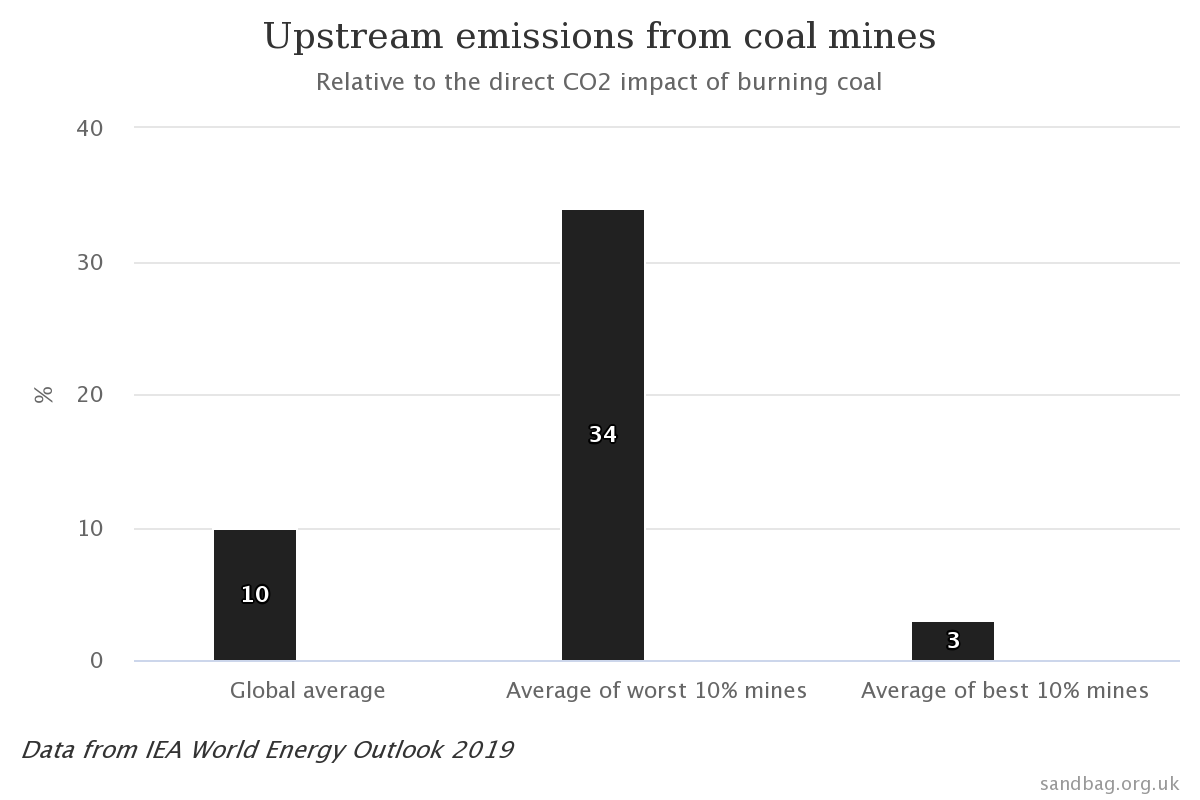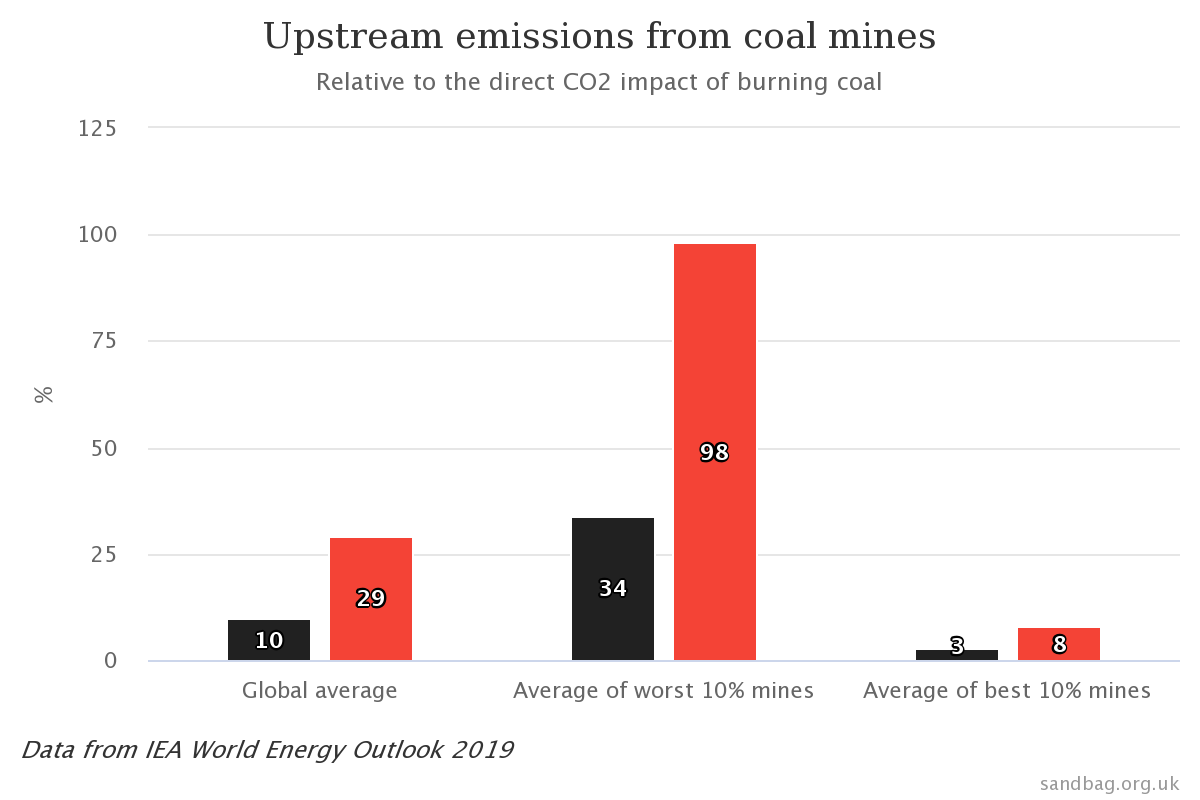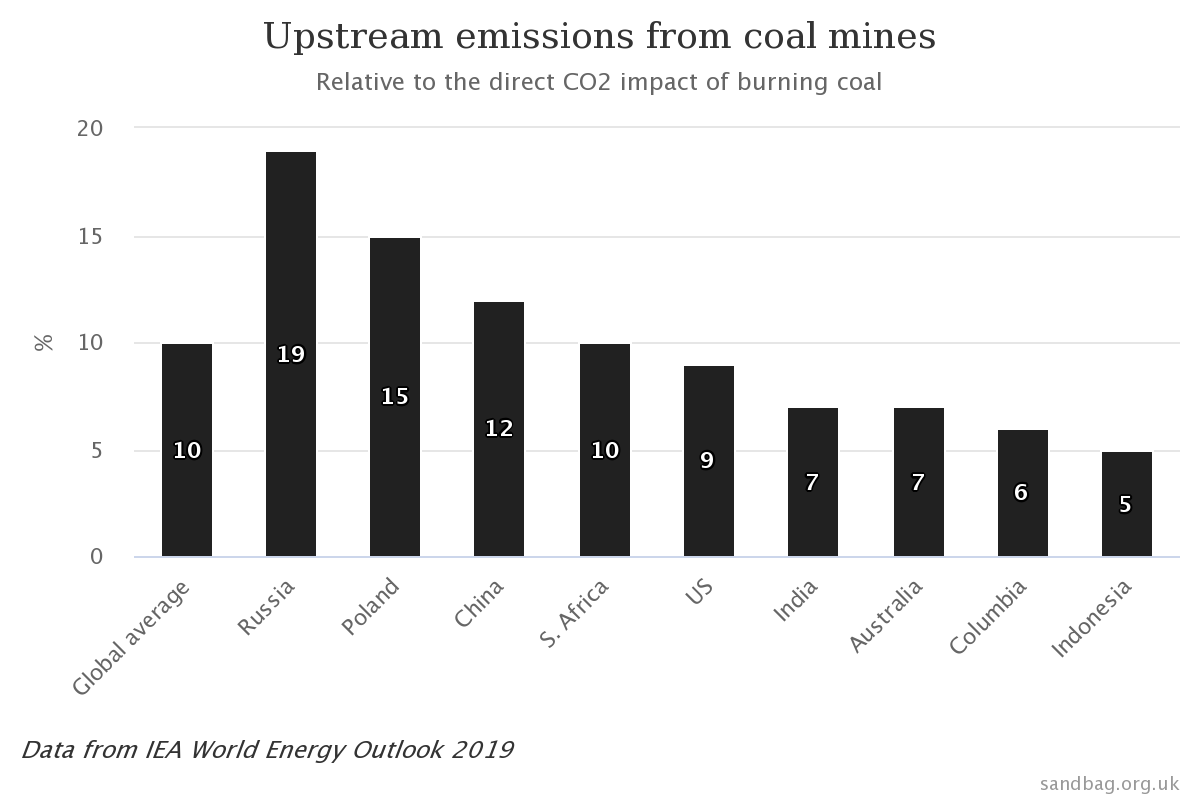
Breadcrumbs
Coal mine methane leaks worse than shipping & aviation
New findings in today's IEA World Energy Outlook show that coal mine methane leaks are worse for climate change than shipping and aviation combined.
Should deep coal mines be phased out first?
- The IEA analysis suggests that governments should assess the full lifecycle emissions of all mines (including methane emissions) and focus phase out efforts on the most climate-damaging mines. In many countries this may be the deepest mines, but this is not guaranteed.
- The IEA makes clear that it is not easy to abate the emissions from deep mines, so it’s questionable to what extent policy could reduce emissions. Closure is the only viable option.
- Deep coal mines are generally the least economic, because the high costs of developing them, as well as safety equipment needed to protect against the risk of methane explosions.
Governments, research organisations and companies should:
- Improve monitoring of mine-by-mine methane levels.
- Agree appropriate standards to encourage abatement and shut the worst polluters.
- Include upstream coal emissions in energy and climate plans, in power sector planning and all emissions reporting.
- Make sure upstream coal emissions are included in national carbon pricing schemes.
Coal mining is a major problem for the climate.
Policy action to cut these emissions – especially at deep mines – must follow
Read the Guardian article on this finding here









The IEA’s 800-page World Energy Outlook was released today, and hidden away in it is explosive new research on methane leaks from coal mines, writes Ember Electricity Analyst Dave Jones. In this blog, we try to make sense of the IEA research, and the implications that follow from it.